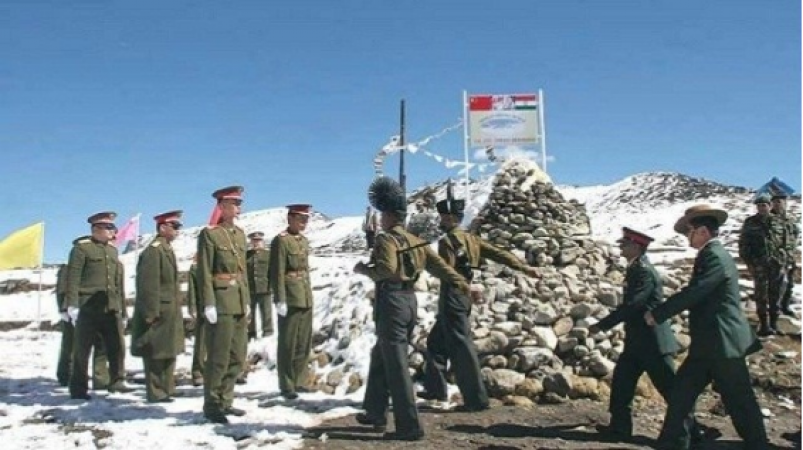
Beijing: The G695 highway will pass through areas that are actively fighting and runs north of the Line of Actual Control. According to one observer, who claims that India is also developing infrastructure, "China intends to control remote areas for faster movement of troops."
China intends to build a new highway close to its controversial border areas with India as part of Beijing's efforts to bolster its strategic position and project its power, but the South Asian neighbor is likely to be alarmed by the move. The new national programme, which aims to build 461,000 km (286,400 mi) of highways and motorways by 2035, as China seeks to revive its booming economy and boost consumer spending through infrastructure investment, including highways Includes 345 construction plans for the . Kashgar in Tibet, to Majha in the Xinjiang region.
According to plans unveiled last week, the G695 highway is projected to pass through the southern Tibetan county of Kona, which lies directly north of the disputed Indo-Tibetan border marked by the Line of Actual Control (LAC), Kamba, which is a notable military hub. Home of the camp, and Gyorong, which is close to the Nepalese border.
Along with Zanda County in Nagari Prefecture, which is partly controlled by India, it will also pass through Burang County, which is shared by Tibet, Nepal and India.
Although the specifics of the new construction are still unknown, the highway may eventually pass through controversial areas on the LAC such as Depsang Plain, Galwan Valley and Hot Springs.
A conflict in the Galwan Valley two years ago that resulted in the deaths of at least 20 Indian and four Chinese soldiers and brought bilateral ties to an all-time low, continues to this day, a military conflict between China and India. gave rise to a deadlock.
After more than 12 hours of talks, the latest round of military talks on Sunday again failed.
The two armies late on Monday announced their agreement along the LAC to maintain "security and stability" on the ground in the western sector.
After the 16th round of talks, a statement was issued stating that the two sides have agreed to maintain close communication and dialogue through military and diplomatic channels so that any outstanding issues can be resolved at a mutually appropriate point of view at the earliest. find an agreed solution.
Beijing hopes to "further increase [its] logistical build-up" in the border region by building a new road, according to Srikant Kondapalli, a professor of China studies at Jawaharlal Nehru University in New Delhi.
"China intends to control remote areas for rapid movement of troops in case of any Soviet-style breakup, domestic rebellion, or external support," he declared.
Kondapalli said that in the early 1980s, China began building vast infrastructure in Tibet, Xinjiang and other border regions, although many of these projects had "low economic value compared to their strategic objectives".
China has intensified such efforts over the past ten years, with continued efforts to upgrade some highways near its border areas.
This includes the highway G219, which once connected Yicheng in Xinjiang with Lhatse in Tibet. It is currently being expanded to connect its entire western and southern border passing through Tibet and Yunnan, including the disputed Aksai Chin, from the Qom-Kanas Mongolian ethnic settlement in Xinjiang to Dongxing in Guangxi next to Vietnam. .
This includes the highway G219, which once connected Yicheng in Xinjiang with Lhatse in Tibet. It is currently being expanded to connect its entire western and southern border passing through Tibet and Yunnan, including the disputed Aksai Chin, from the Qom-Kanas Mongolian ethnic settlement in Xinjiang to Dongxing in Guangxi next to Vietnam. .
China also began upgrading the G216 highway and in Tibet in 2016 to connect Gyarong County to Hongzanzhui, a transit port in Xinjiang's Altay, on the border with Mongolia.
Kondapalli said, "It is also to prepare for the 'sincerization' of Tibet and Xinjiang and to prepare for the 15th Dalai Lama contingencies. Through these infrastructure projects, China will be able to reach South Asia, Southeast Asia and Central Asia." Hoping to expand as well.
Beijing has long held the view that adequate transportation infrastructure is essential for both national security and economic development, as well as reducing poverty.
Beijing refuse reports on invitation EU leaders to visit in November.
PLA conducts military exercises on Pangong Lake
Several labourers missing from Indo-China border, body of one found
The Chinese military tests a trying to cut rocket launch system at a great height.